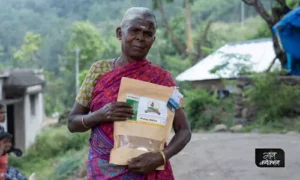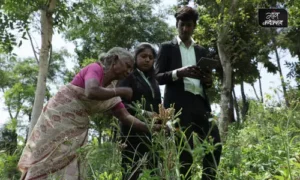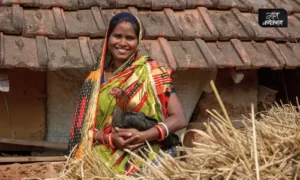Seven days of relentless rainfall in Odisha has affected as many as half a million people in the state as hundreds of villages across 12 districts have been submerged under water from the overflowing Mahanadi river. The floods have also worried farmers in the coastal state who are staring at heavy losses.
Pradip Kumar Jena, the Special Relief Commissioner in the Odisha State Disaster Management Authority informed Gaon Connection that so far 1,757 villages in 64 blocks of 12 districts have been affected by the flood.
“A total of 425 villages are completely waterlogged and 4,67,321 people are affected by floods in the state. Of these, 250,000 people are marooned and surrounded by floodwater. So far, the administration has transported almost 53,866 people to safer locations,” the official said.
“All the necessary arrangements have been made for the people who have been translocated. Around 158 temporary kitchens have been set up for the affected people, and about 60,000 people are being provided with cooked food,” he added.dayThe affected districts include Sambalpur, Jharsuguda, Deogarh, Bargarh, Angul, Boudh, Subarnapur, Bolangir, Nuapada , Kalahandi Cuttack, Kendrapara and Jagatsinghpur.
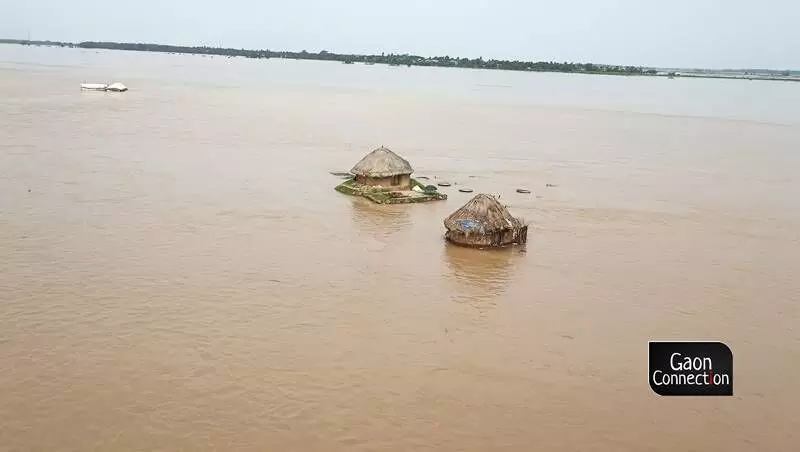
Riverside villages in Cuttack, Jagatsinghpur and Kendrapara remain to be the worst-affected where hundreds of villages are marooned and disconnected from the administrative centres.
Farmers staring at losses
Much to the agony of the paddy farmers in Odisha, this year, the monsoon rainfall was below expectations during the paddy sowing in the cultivation-intensive months of June and July. Now, excess rainfall in August has once again added to the woes of the farmers.
“The rainfall is crucial for farmers in June and July not only for the rain-fed crops but for the entire region because rain water in the rivers is used for irrigation through canals. But seven-day long incessant rain in the middle of August has dampened the spirits of thousands of farmers in the state,” Gayadhar Dhal, a farmers’ leader and the vice-president of Krusaka Sabha — a farmers’ organisation told Gaon Connection.
Umashankar Das, Senior scientist at the Regional Meteorological Centre in Bhubaneswar agreed with the farmers’ leader.
“Odisha needs 562. 03 mm [millimetres] of rainfall in June and July but the state received 508.01 mm of rain in these months this year. On the other hand, in August the state needs 366.04 mm rainfall. But till August 17, the state has already received 339.08 mm rain due to three low pressures in the Bay of Bengal,” the weather scientist told Gaon Connection.
When asked if the changing rainfall patterns in the coastal state can be attributed to the adversely changing climate, the scientist agreed. “Longer monsoon pauses and heavy rainfall for a few days are signs of climate change,” he remarked.
As per the state’s Department of Agriculture & Farmers’ Empowerment, the state has a cultivated area of 6,180,000 hectares out of which 2,914,000 hectares is high land, 1,755,000 hectares is medium land and 1,511,000 hectares is classified as low land. It is the farmlands in the low-lying areas of Mahanadi river basin which are worst affected by the floods.
The coverage under Paddy during Kharif [summer crop cycle] is about 4,124,000 hectares and during Rabi [winter crop cycle] is 331,000 hectares. The total irrigation potential created so far from all sources is about 4,274,000 hectares. The gross irrigated cropped area is 3,177,000 hectares which is about 74 per cent of the potential created.
No respite from rainfall in coming days
Thousands of rural residents in the flood-hit villages in the state are even more worried after the India Meteorological Department has released a forecast for another low pressure area that is very likely to bring more rainfall to the state tomorrow, on August 19.
“A low pressure area is likely to form over North Bay of Bengal around August 19 under the influence of a cyclonic circulation over south Myanmar and neighbourhood,” informed HR Biswas, director of IMD’s Bhubaneswar Meteorological Centre.
“Under influence of anticipated low pressure area, squally weather with gusty surface wind speed reaching 45 to 55 kmph [kilometres per hour] is very likely over north adjoining west central Bay of Bengal during August 19 to 20 and along & off Odisha coast on August 20,” the IMD official added.
Riverside villages in Cuttack, Jagatsinghpur and Kendrapara remain to be the worst-affected where hundreds of villages are marooned and disconnected from the administrative centres.
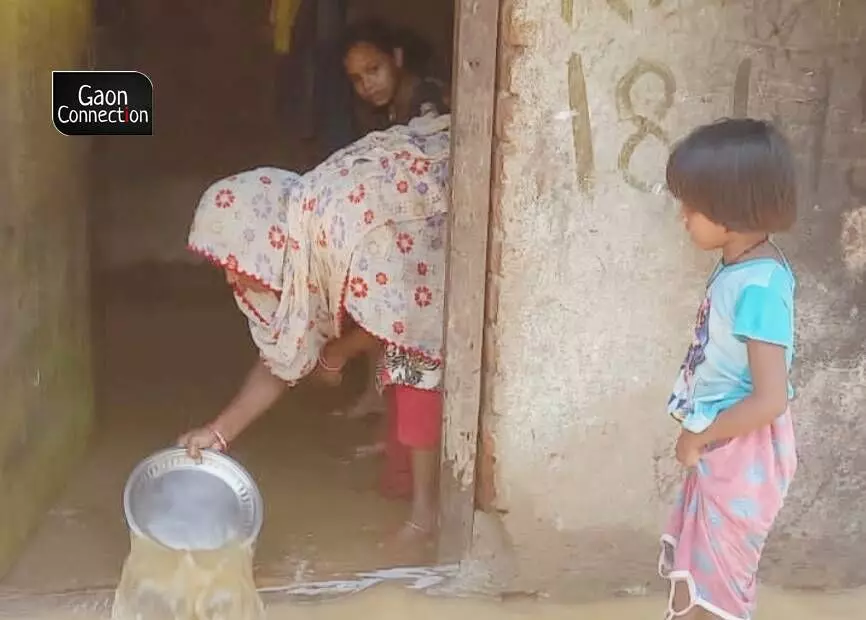
Meanwhile, officials at the Hirakud dam, which is one of the biggest dams in the country, are trying to limit the outflow of the water from the swollen Mahanadi river.
The water released they d from Hirakud dam reservoir on August 17 is to reach Mundali on August 18 evening but the outflow is to stay at 10.10 lakh cusec, the official informed.
“The situation is being monitored closely, as heavy rainfall is expected over the next couple of days due to the formation of a low pressure area on North Bay of Bengal on August 19. Efforts are being taken to control the outflow and reduce it to around 8 lakh cusec. The water level was rising at Brahmani in Jenapur and Subarnrekha at Jamsolaghat,” Bijay Kumar Mishra, Engineer-in-Chief in the state’s Department of Water Resources told Gaon Connection.
“At 9 am on 18 August , the water level in Hirakud reservoir was 624.69 feet. The dam was receiving 4.40 lakh cusec water from the upstream and discharging 6.74 lakh cusec through 40 sluice gates. The discharge at Khairmal was 8.5 lakh cusec, at Barmul it was 8.8 lakh cusec and at Mundali it was 10.10 lakh cusec. It will reduce further till the water released from the dam reaches Mundali on 18 August night,” the official added.







